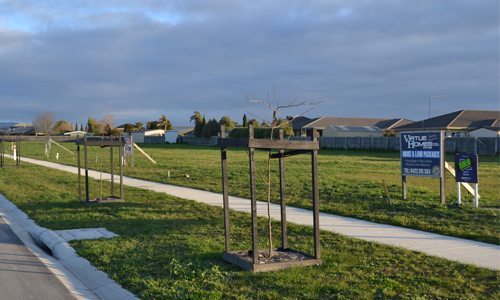27 August 2016
 Tips for Choosing Your Block
Tips for Choosing Your Block
When selecting your block there are a few things that you should consider before you buy. We offer free consultation for choosing the right block that suits your needs. Here are a few things to keep in mind before buying.
Orientation – The orientation of your block will play the biggest role in helping design your new home. You should aim to have all open living on the north side of your home to make the most of the natural light.
Fall – The greater the fall across your block, the higher the cost will be to build on it. For concrete slabs we need to cut into the block to flatten out the site so that we can pour the slab. If there is too much fall a concrete slab may not be possible and you will need to build on stumps. High levels of fall could result in extras costs for a site cut or possible engineering if required.
Soil Test – We recommend getting a soil test completed on your block to see how strong your foundation is. A soil test will determine how much fill there is across your block. A lot of fill will require extras works to your slab to ensure that your new home doesn’t move on your block.
Easements – It is common for a block to have an easement around 2-3m wide on it. Easements are mostly located along the rear boundary or down the sides of a block along the fence line. Owners of the block are restricted from building on top of an easement.
Obstacles – At the front of your property there may be things such as light poles, stormwater pits, NBN pits, fire hydrants, etc. These can all be very costly to move and often aren’t thought of until late in the building process. When designing the front of your home (including the driveway), make sure to take these into consideration or it could potentially set you back thousands of dollars.
BAL – Victoria has mapped bushfire prone areas. Any new homes in these bushfire prone areas require certain building materials and processes to help protect the home against possible bushfires. When building in a bushfire prone area make sure to allow for extra costs associated with the Bushfire Attack Level (BAL) zoning.